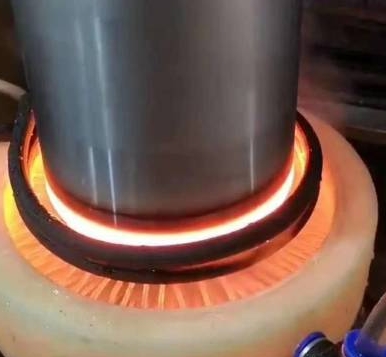- 28
- Apr
Common hardness classification in high frequency quenching technology
Common hardness classification in high frequency quenching technology
1. Rockwell hardness: Determine the hardness value index based on the depth of plastic deformation of the indentation. It is usually used for materials with higher hardness, such as hardness after heat treatment.
2. High frequency quenching machine Brinell hardness (HB): Usually used when the material is soft, such as non-ferrous metals, steel before heat treatment or after annealing.
3. Vickers hardness: Compared with the Brinell and Rockwell hardness tests, the Vickers hardness test has a wider measurement range, covering almost all kinds of materials from soft materials to superhard materials.
4. Leeb hardness: Expressed in HL, use an impact body with a certain mass of tungsten carbide ball head to impact the surface of the test piece under the effect of a certain force, and then rebound. Because the hardness of the material is different, the rebound speed after impact is also different. There is a permanent magnet material installed on the impact device. When the impact body moves up and down, its peripheral coil will induce an electromagnetic signal proportional to the speed, and then convert it into a Leeb hardness value through an electronic circuit.
5. Shore hardness: HS for short. A standard that indicates the hardness of a material.
6. Barcol hardness: Barcol (Barcol) hardness (referred to as Barcol hardness) is a hardness category widely used in the modern world, and the Barcol hardness unit is expressed as HBa.
7. Knoop hardness: the hardness measured as a certain value, which is mainly used in processing. Generally speaking, the Knoop hardness of diamond is 7000~8000 kg/mm2.
8. Webster hardness: a hard steel indenter of a certain shape is pressed into the surface of the sample under the standard spring test force, and the indentation depth of the indenter is used to determine the hardness of the material. The indentation depth of 0.01mm is defined as one Wei Hardness unit. The Webster hardness unit is indicated as HW.

